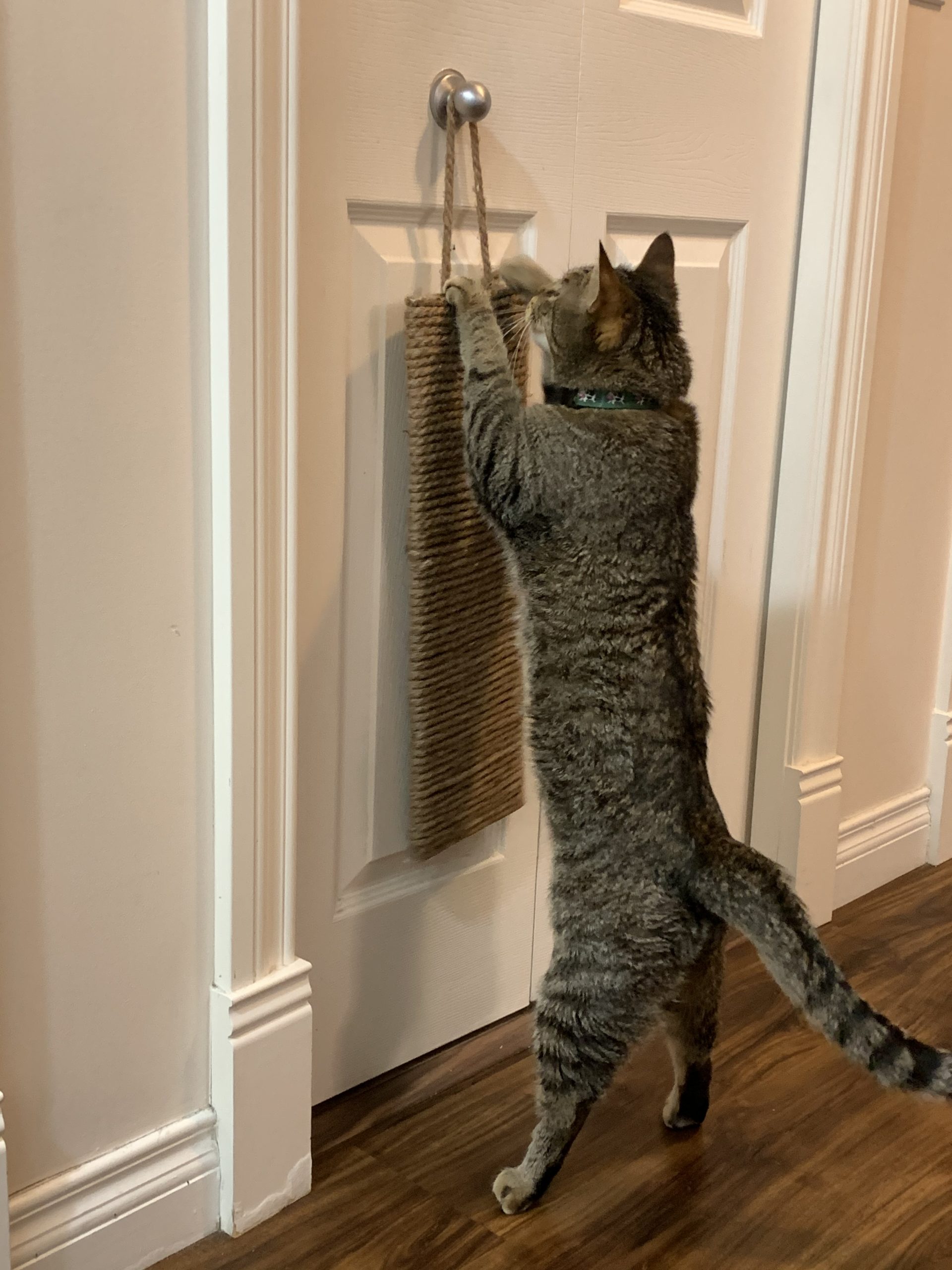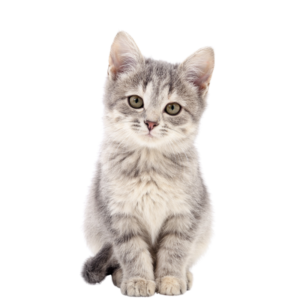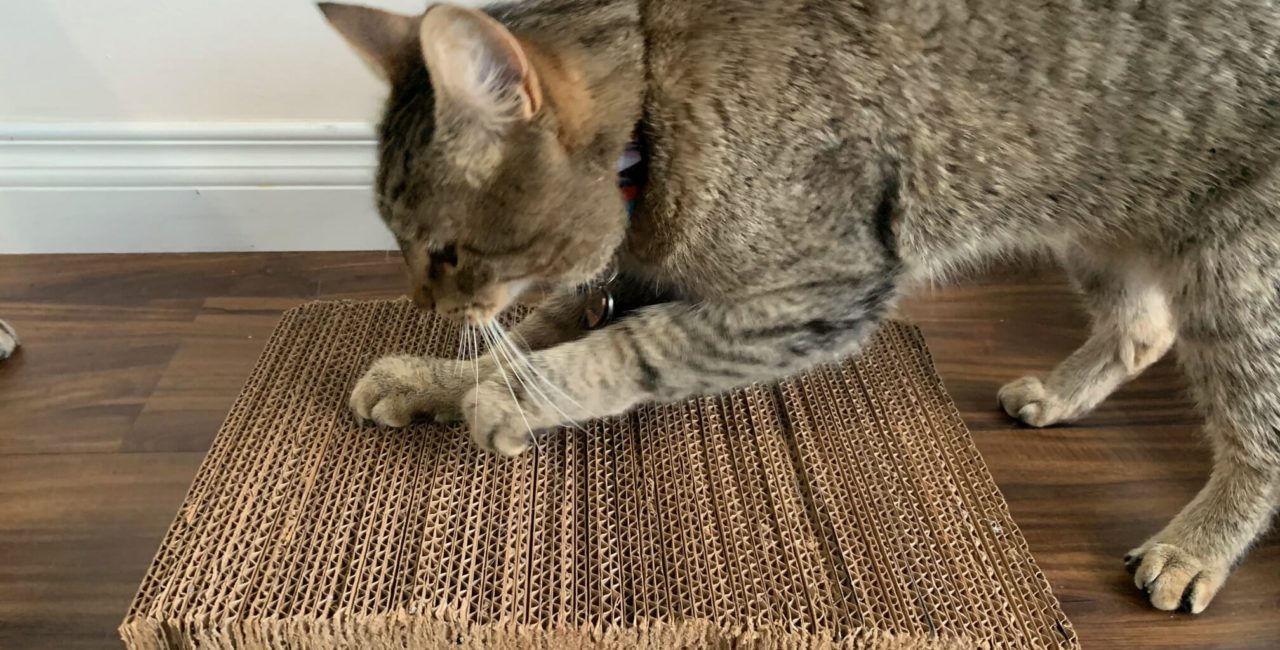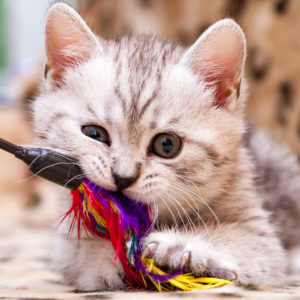Indoor cats need enrichment and mental stimulation. Enrichment can increase activity (which can help with weight control) and prevent many behavioural issues related to low mental stimulation (things like inappropriate litter box usage, anxiety, aggression and attention-seeking).
Enrichment can come in a variety of forms; from food puzzles to scratching posts, and toys to catios. Over the next few weeks we will dig deeper into a few categories and give you ideas for how to use items you have at home, how to build projects from scratch and what to look for if you’d rather just buy something!
Our next category is SCRATCHING POSTS. Cats scratch to spread their scent and shed their claws so it’s very important to provide appropriate places for them to carry out this behaviour. Cats have different preferences for the substrate they like to scratch (ex. carpet, cardboard, sisal rope) and the placement of those substrates (ex. horizontal, vertical, angled).
CARDBOARD is typically the most cost-effective way to provide scratching outlets for your cats. Cardboard scratchers are fairly inexpensive at stores, in clinics, etc. and they are essentially free if you want a DIY project. This was one I made by cutting corrugated cardboard into strips and gluing them all together.
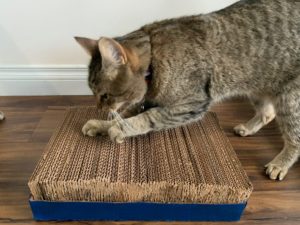
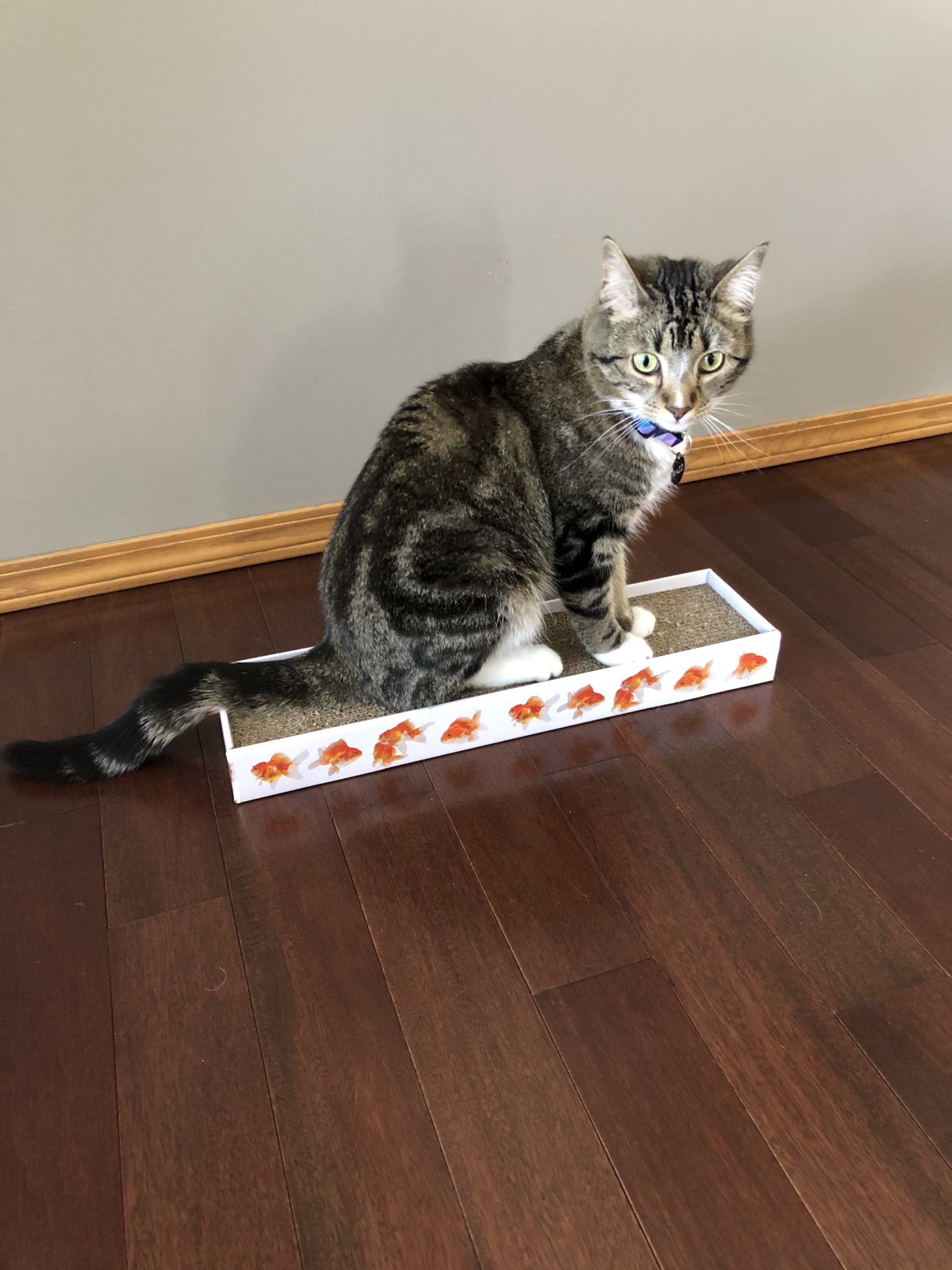
We all know that cats love to scratch CARPET… so why not provide them with an appropriate spot for them to do that! Carpet-covered cat trees and scratching posts are extremely common and can be found online, in pet stores and ordered through the clinic. They can also be made using old carpet you have at home.
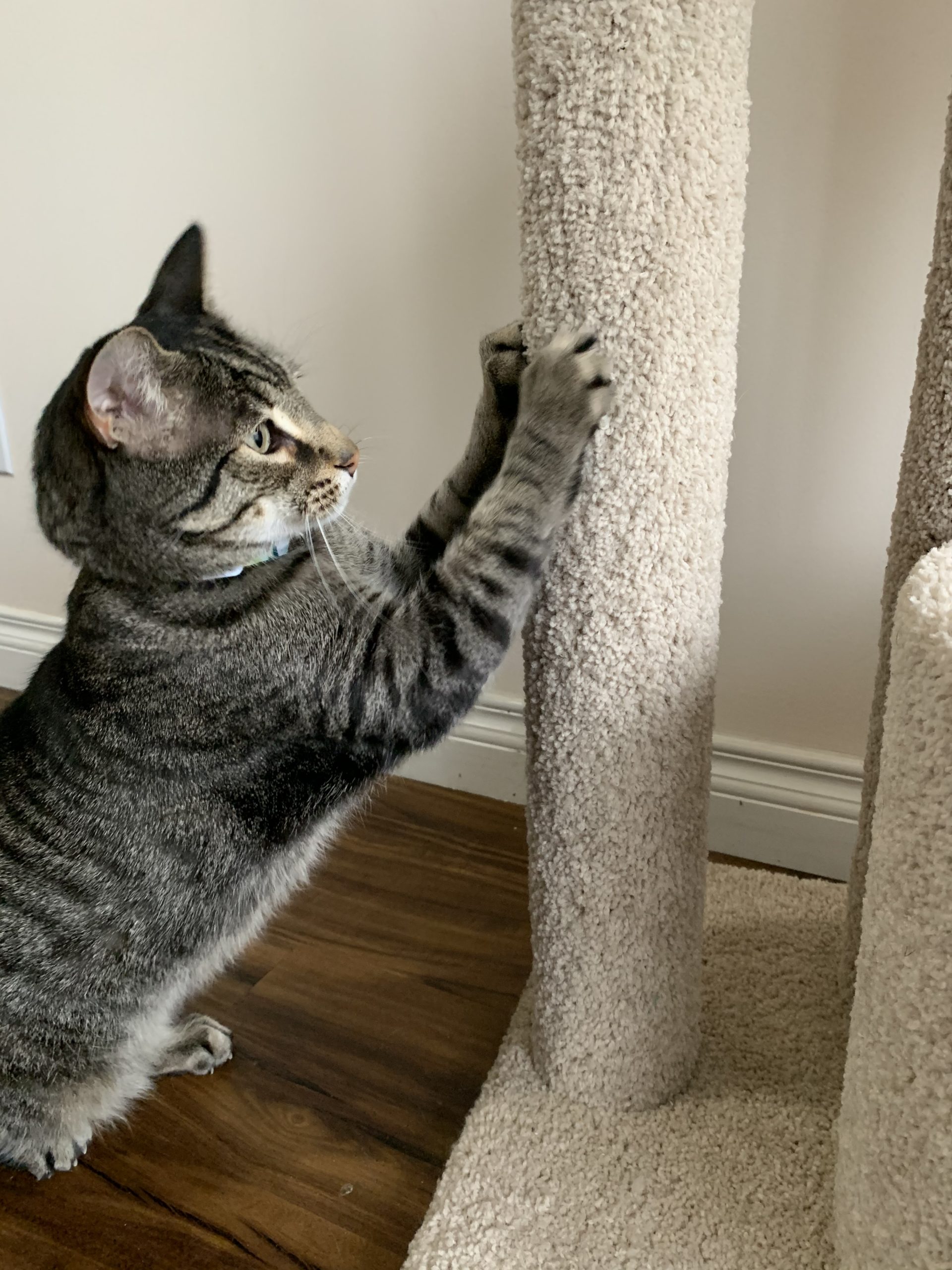
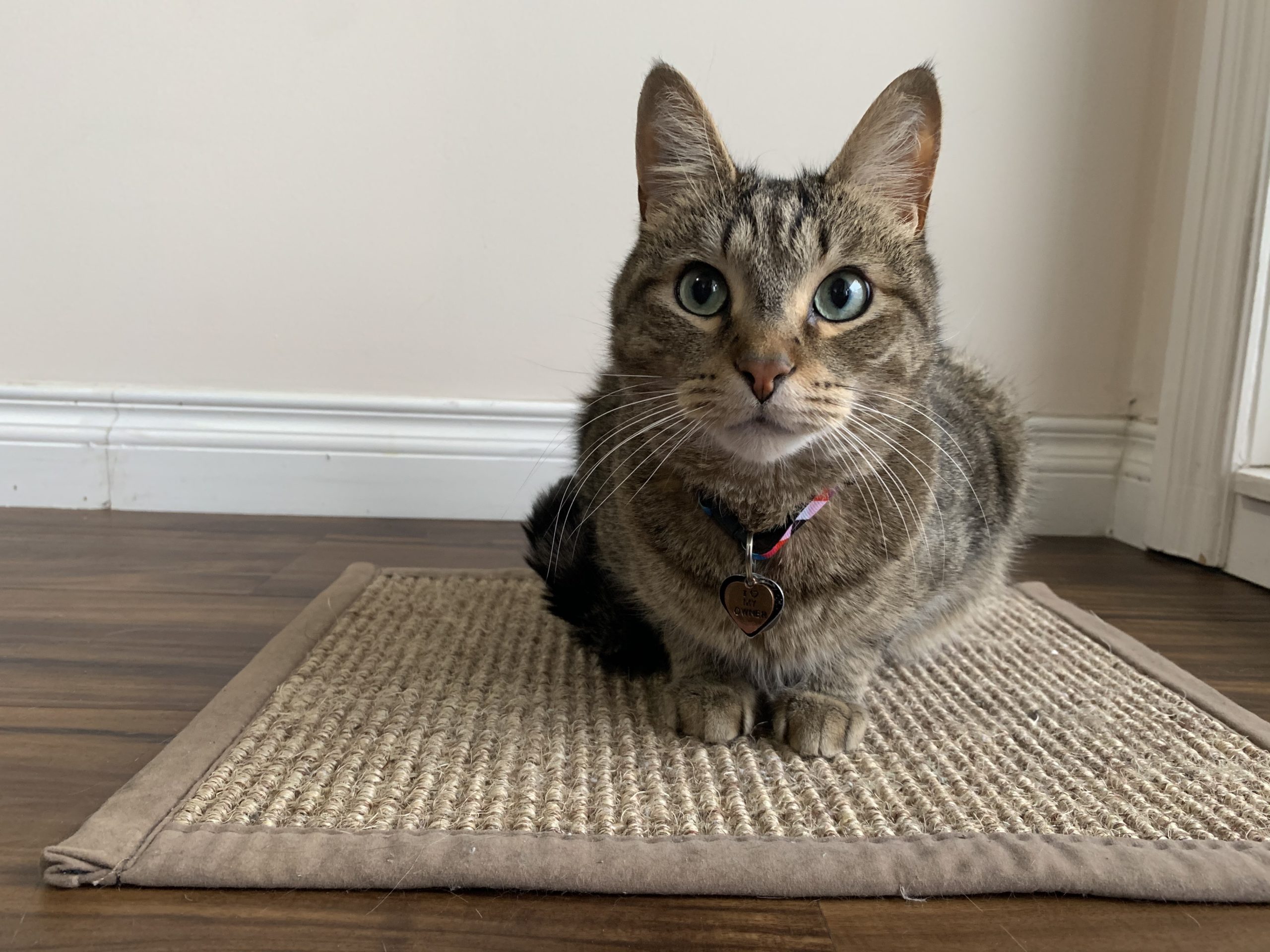
ROPE is probably the easiest substrate to use if you’re wanting to make your own scratcher. I find sisal rope with a diameter of around 5mm the easiest to work with, as well as the most cost-effective. For this scratching-post jungle gym I made, I covered PVC pipes with sisal rope using hot glue. The PVC pipe can be anchored to the wall, the floor, etc. in any direction to allow a variety of options for your kitty.
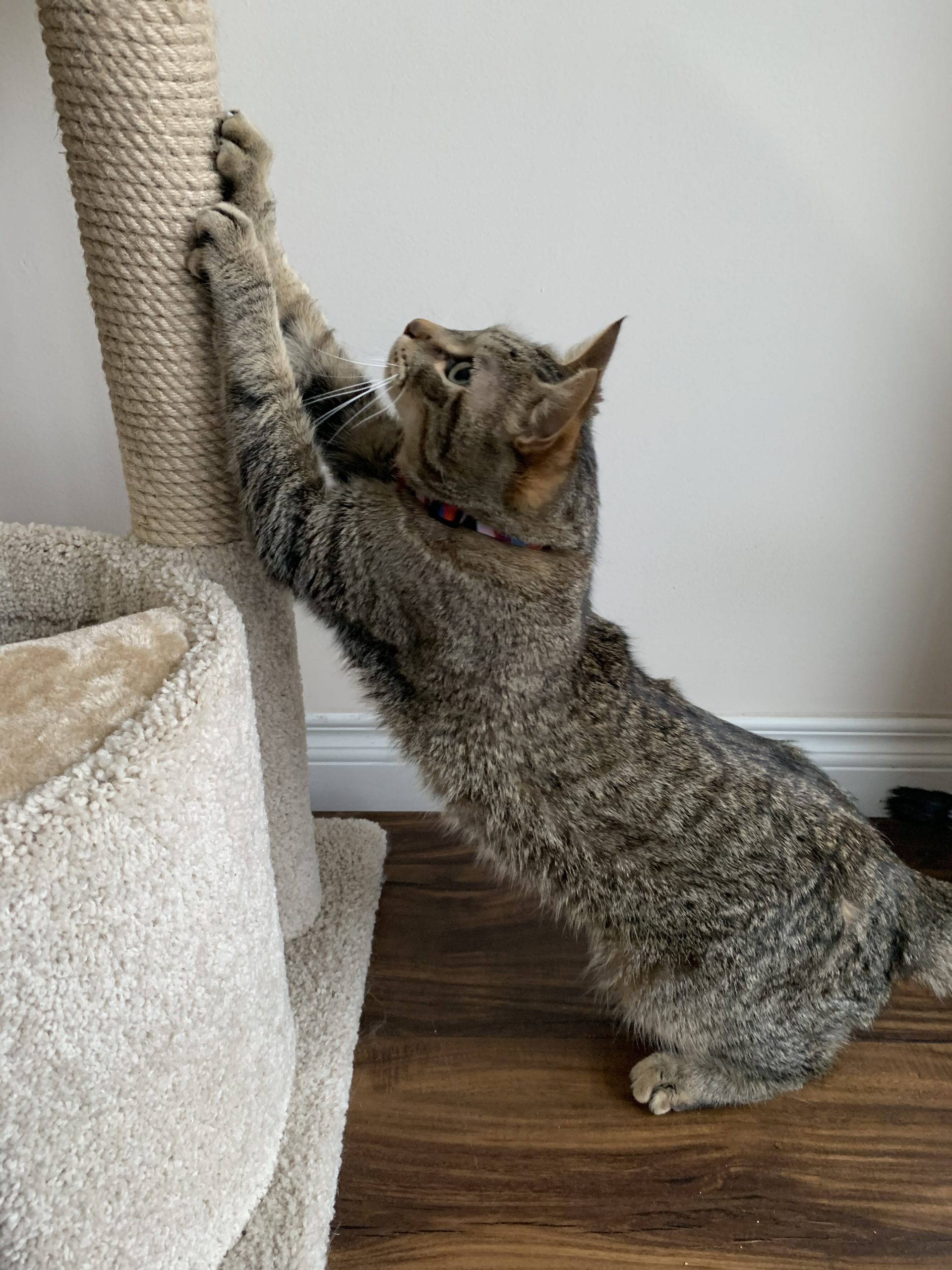
Along with substrate preferences, cats also differ in the DIRECTION they like to scratch. Some cats prefer scratching on horizontal surfaces, while others like to stretch and scratch on vertical surfaces. This door-hanging scratcher was made with sisal rope, cardboard and hot glue, and allows the kitties to scratch while reaching or standing up.
